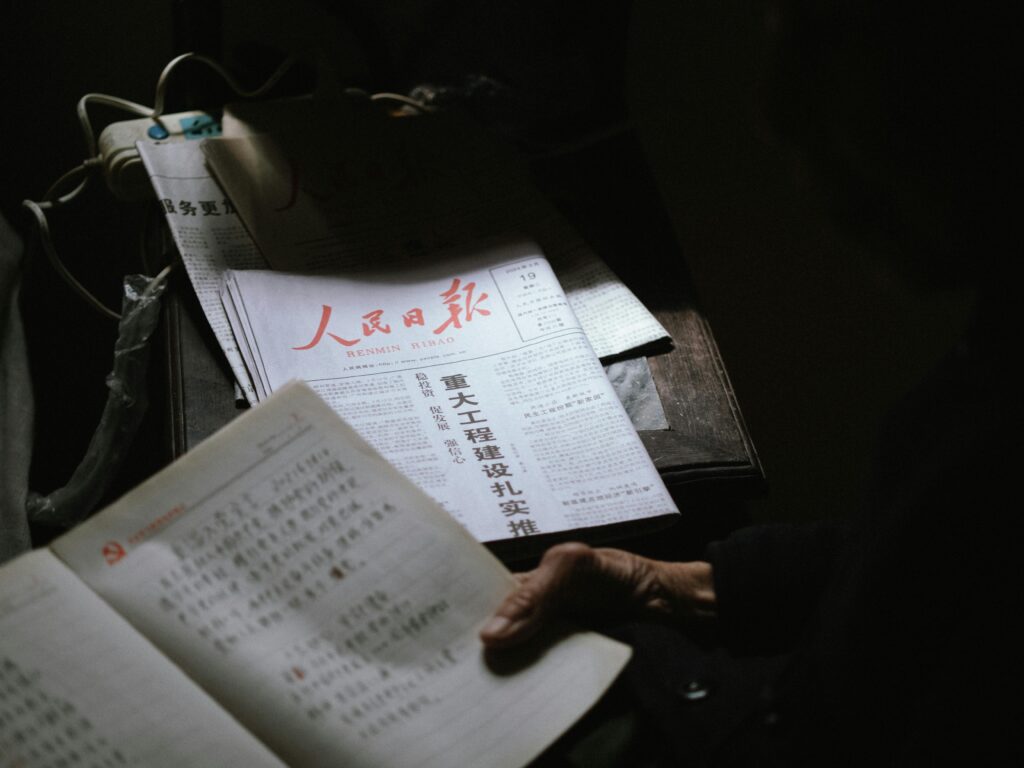Introduction of Old Lady in the Shoe Poem
The old lady in the shoe poem is one of the most recognizable nursery rhymes in English literature. It’s whimsical, rhythmic, and filled with curiosity. First of all, its simplicity makes it a favorite for children, teachers, and even content creators who use it for storytelling and educational lessons. From its mysterious origins to its use in modern-day classrooms and books, the old has more to offer than you might expect.
Let’s explore why this classic verse remains so popular today. From its mysterious origins to its use in modern-day classrooms and books, the old has more to offer than you might expect.
What is the Old Lady in the Shoe Poem?
The old is a traditional English nursery rhyme that dates back to at least the 18th century. From its mysterious origins to its use in modern-day classrooms and books, the old has more to offer than you might expect.The most well-known version reads:
“There was an old woman who lived in a shoe,
She had so many children, she didn’t know what to do;
She gave them some broth without any bread;
Then whipped them all soundly and put them to bed.”
This short verse paints a vivid image of a woman overwhelmed by a large number of children. Although simple on the surface, it has been analyzed for its social commentary, rhythm, and cultural impact. From its mysterious origins to its use in modern-day classrooms and books, the old has more to offer than you might expect.The most well-known version reads:
The poem’s charm lies in its brevity and whimsical imagery. The idea of living in a shoe is both absurd and imaginative, which makes it memorable for generations of readers. Although simple on the surface, it has been analyzed for its social commentary, rhythm, and cultural impact.
Benefits of the Old Lady in the Shoe Poem Aslo Visit This {Off Broadway Shoes}
The old lady in the shoe poem offers multiple educational and entertainment benefits:
- Language Development:
Moreover, the rhyme scheme helps children learn phonetics and rhythm. - Imagination Stimulation:
In addition, its surreal imagery sparks creativity and storytelling skills. Moreover, the rhyme scheme helps children learn phonetics and rhythm. - Moral Discussions:
Teachers can explore themes like responsibility, parenting, and empathy. - Cultural Literacy:
Knowing the old connects children with literary heritage. - Easy Memorization:
Its short, catchy structure makes it easy to remember and recite.

How to Use the Old Lady in the Shoe Poem Effectively
Whether you’re an educator, parent, or content creator, there are many ways to use the old lady in the shoe poem. Moreover, the rhyme scheme helps children learn phonetics and rhythm.
1. In Classroom Activities
Use the poem as a starting point for vocabulary, storytelling, and acting exercises. Whether you’re an educator, parent, or content creator, there are many ways to use the old lady in the shoe poem.
2. In Storybooks and Illustrations
Pair the rhyme with creative artwork. This helps children visualize and relate. Whether you’re an educator, parent, or content creator, there are many ways to use the old lady in the shoe poem.
3. As a Teaching Tool for Rhythm and Rhyme
Break down the rhyme structure to teach poetic forms.
4. In Parenting Lessons or Social Conversations
It opens up dialogue about child-rearing and compassion.
5. In Digital Content or Educational Blogs
Use the poem in blog posts (like this one) or video lessons for engagement.
Deeper Meaning Behind the Old Lady in the Shoe Poem
While the old seems lighthearted, it can be interpreted through deeper lenses like history, feminism, and psychology.

Social Commentary
During the 18th century, when the poem first appeared, large families were common, and women often bore the burden of raising multiple children alone. The poem may reflect this reality—an overwhelmed mother trying to manage with very few resources.
In that context, the line “She had so many children, she didn’t know what to do” reveals more than chaos—it’s a social critique on poverty, parental stress, and lack of support. During the 18th century, when the poem first appeared, large families were common, and women often bore the burden of raising multiple children alone. While the old seems lighthearted, it can be interpreted through deeper lenses like history, feminism, and psychology.
Feminist Interpretation
From a feminist perspective, the old lady in the shoe poem symbolizes the lack of agency many women experienced. The old lady could represent a matriarchal figure forced into care roles without support or acknowledgment.
Scholars have also pointed out the importance of analyzing traditional nursery rhymes to uncover outdated gender stereotypes. Teaching children modern, inclusive versions can encourage awareness and empathy.
Psychological Angle
Emotionally, the poem taps into themes of exhaustion, duty, and survival. Modern psychology often links nursery rhymes with emotional development. Children understand emotions through patterns—and this poem introduces a balance between affection (caring for many kids) and discipline (putting them to bed). Scholars have also pointed out the importance of analyzing traditional nursery rhymes to uncover outdated gender stereotypes.
Classroom Lesson Plan: Teaching the Old Lady in the Shoe Poem
Let’s explore how to create an engaging lesson plan using the old lady in the shoe poem:

Objective:
Introduce students to rhyme, rhythm, and critical thinking using a classic nursery rhyme.
Materials:
- Printouts of the poem
- Drawing paper
- Crayons or markers
- Audio recording of the poem
- Whiteboard
Lesson Steps:
- Read Aloud: Start by reading the old lady in the shoe poem aloud. Let students repeat lines for rhythm practice.
- Discussion: Ask what they think the poem is about. Encourage creative interpretations.
- Vocabulary Time: Explain older words like “broth” or “soundly.”
- Art Activity: Have students draw their version of the “shoe house.” Scholars have also pointed out the importance of analyzing traditional nursery rhymes to uncover outdated gender stereotypes.
- Group Acting: Divide the class and have them act out the poem.
- Creative Writing: Ask students to write a modern version of the rhyme with their own twist.
Teacher Tip: Use rhyme to help with ESL (English as a Second Language) comprehension. The old lady in the shoe poem helps students hear stress patterns and vocabulary in a playful context. Scholars have also pointed out the importance of analyzing traditional nursery rhymes to uncover outdated gender stereotypes.
Reimagining the Old Lady in the Shoe Poem for Modern Times
Writers and educators today often adapt the old lady in the shoe poem for a more positive or humorous tone.

Classic Version (Original):
“There was an old woman who lived in a shoe…”
Modern, Kinder Version:
“There was an old woman who lived in a shoe,
With a garden of flowers and a nice sky-blue hue.
She loved all her children and taught them with care,
With songs in the morning and stories to share.”
Why Modernize?
- Reduce harsh tones: The original whipping line isn’t appropriate for modern classrooms.
- Encourage creativity: New versions allow for cultural updates and fresh perspectives.
- Promote empathy: New lines focus on love, patience, and humor instead of punishment.
Tip: When rewriting the old lady in the shoe poem, preserve the rhythm and structure. This keeps the charm intact while adapting the message. New lines focus on love, patience, and humor instead of punishment. New lines focus on love, patience, and humor instead of punishment.
Cultural References in Media and Pop Culture
The old lady in the shoe poem has appeared in countless books, movies, and TV shows. Let’s explore a few examples:
- Mother Goose Collections: The poem is always part of traditional anthologies.
- Shrek 2: A giant shoe appears as a fairy-tale residence.
- Sesame Street: The character “Mother Goose” often references this rhyme.
- Music Videos: Some indie artists use the concept of “living in a shoe” as a metaphor for chaotic family life.
- Art Installations: Sculptures and murals around the world depict imaginative versions of the old woman’s shoe house.
These appearances highlight the poem’s staying power. Even after centuries, the old continues to inspire artists and educators.

Printable Versions and Templates
For teachers, parents, or content creators, here’s how you can use printable versions:
1. Coloring Page Templates
Include a large shoe image with blank space for kids to draw characters.
2. Poetry Booklet
Create a DIY poetry book including this rhyme with a “My Version” page at the end.
3. Lesson
Prepare a PDF with questions like:
- How many kids do you think the lady had?
- What else could the shoe be made of?
- What would your shoe house look like?
4. Story Cards
Break the poem into lines, cut them out, and let children rearrange them to learn sequence.
These activities encourage hands-on learning and deeper connection to the old lady in the shoe poem.
Fun Facts About the Old Lady in the Shoe Poem
- No one knows the exact origin—it likely came from oral traditions.
- Some versions were written in dialect to reflect working-class speech.
- In older versions, the children were “whipped soundly,” but now many substitute it with “kissed them all kindly.” Create a DIY poetry book including this rhyme with a “My Version” page at the end.
- It’s often included in “Mother Goose’s Nursery Rhymes.”
- Some scholars think the “shoe” might symbolize poverty, protection, or femininity.
Fun facts help children and adults alike appreciate the poem on a richer level.

Incorporating the Poem in Digital Learning
If you’re creating a digital course, eBook, or YouTube video, the old is great content.
Tips:
- Use animation: A short video of the poem with voice-over can enhance engagement.
- Include downloadable worksheets.
- Offer coloring book PDFs.
- Add interactive quizzes asking kids what they’d do in the shoe.
Digital tools like Canva, StoryJumper, and Book Creator can help bring the old to life. If you’re creating a digital course, eBook, or YouTube video, the old is great content.
Story Expansion: What Happened After the Poem?
Here’s an example of a creative follow-up story you can use or adapt for classroom or digital use:
After the old lady put all the children to bed, she sat quietly on the porch of her shoe-shaped house. But then she had an idea. What if she built another shoe next door? One for reading, one for playing, one for dreaming?
The next morning, the children woke up to find little boot-shaped homes scattered around. One was a kitchen, one a library, and one a treehouse! This type of imaginative storytelling builds on the original old lady in the shoe poem while providing wholesome content for children.
From that day on, the shoe was no longer too small. It became a shoe village—and every child had a space to laugh, learn, and grow.
This type of imaginative storytelling builds on the original old lady in the shoe poem while providing wholesome content for children.

Additional Learning Activities for the Old Lady in the Shoe Poem
To make learning more interactive and engaging, try these creative activities centered around the old lady in the shoe poem: Instead of a shoe, they could live in:
Story Rewriting Challenge
Ask students or children to rewrite the poem using different settings. Instead of a shoe, they could live in:
- A teapot
- A giant book
- A spaceship
- A pumpkin
Example Rewrite Prompt:
“There was an old woman who lived in a pumpkin.
It wobbled and rolled with every bump in…”
Let kids complete it. This builds rhyming, critical thinking, and writing skills. Ask students or children to rewrite the poem using different settings. Instead of a shoe, they could live in:
Role-Playing Game
Create character cards for:
- The old lady
- Each child (give them fun names)
- A talking shoe
- A pet mouse who lives in the heel
Let students role-play and act out scenarios from the old lady in the shoe poem. This builds communication and emotional intelligence.

Crafting and DIY Projects Based on the Old Lady in the Shoe Poem
Hands-on activities help young learners connect with literature. Here are some fun, low-cost DIYs:
1. Shoe House Diorama
- Use a shoebox as the base
- Decorate with windows, curtains, and furniture
- Add paper stick children and the old lady
- Label it: “My Old Lady in the Shoe Poem House”
2. Sock Puppet Show
- Create puppets of the characters using socks and buttons
- Let kids act out the rhyme
- Encourage them to add new verses to the poem
3. Story Stones
- Paint stones with characters or phrases from the poem
- Mix them up and let kids draw 3 to create a new story
Crafts like these bring the old to life—literally and figuratively.
Literary Comparisons: Poems Similar to the Old Lady in the Shoe
For a well-rounded language arts lesson, compare the old with other classic nursery rhymes. Here are some similar ones:
| Poem Title | Similarity |
|---|---|
| There Was a Crooked Man | Quirky living situation |
| This Is the House That Jack Built | Repetition and rhythm |
| The House That Jack Built | Sequence of events and family theme |
| Hickory Dickory Dock | Short, rhymed story with child appeal |
| Hey Diddle Diddle | Abstract, imaginative characters |
Use a Venn diagram or comparison chart to analyze differences and similarities. This encourages deeper literary appreciation and vocabulary building.
Writing Prompts Inspired by the Old Lady in the Shoe Poem
Inspire creativity with these writing prompts:
- “If I lived in a shoe, it would have…” “What if the shoe could talk? It builds both narrative and expository writing skills—all inspired by the old lady in the shoe poem.
- “The old woman’s children found a magic key and…”
- “What if the shoe could talk? What would it say?”
- “Describe a day in the life of a child living in the shoe.”
- “Write a news report about the shoe house receiving visitors.”
Encourage both fictional and journal-style writing. It builds both narrative and expository writing skills—all inspired by the old lady in the shoe poem.

Using the Old Lady in the Shoe Poem in Early Education Curricula
Educators often align activities with key learning standards. Here’s how the old lady in the shoe poem supports them:
Language Arts Skills:
- Phonemic awareness (rhyme, rhythm)
- Vocabulary acquisition
- Story sequencing
- Character analysis
Social-Emotional Learning:
- Discuss how the old lady might feel
- Explore teamwork through group activities
- Reflect on family dynamics in different cultures
Visual Literacy:
- Drawing and diorama building
- Identifying details in illustrations
- Analyzing how art reflects tone
By connecting the old lady in the shoe poem to real educational objectives, teachers can deliver both fun and functional lessons.
Global Versions of the Old Lady in the Shoe Poem
Did you know this rhyme has inspired variations around the world? Here are a few adaptations: By connecting the old lady in the shoe poem to real educational objectives, teachers can deliver both fun and functional lessons.
India:
“There was an old amma who lived in a slipper…”
UK (Dialectal Variant):
“Ther’ were auld woman wi’ nowt but a boot…”
African Folklore-Style Retelling:
“An elder in a sandal raised a clan with care…”
These global spins on the old lady in the shoe poem help children understand cultural diversity and how stories travel across borders.
Integrating the Old Lady in the Shoe Poem into Multisensory Learning
To support all types of learners—especially those with different educational needs—incorporate multisensory elements when teaching the old lady in the shoe poem:
- Auditory: Read-alouds, song versions
- Visual: Drawings, videos, flashcards
- Kinesthetic: Role-play, crafts, puppets
- Tactile: Felt boards, textured storybooks
When learners engage multiple senses, they better retain and connect to the message of the old lady in the shoe poem.

Final Throught
In conclusion, the old lady in the shoe poem remains a cornerstone of childhood literature—rich with rhythm, charm, and educational value. It’s more than a nursery rhyme; it’s a teaching tool, a storytelling prompt, and a cultural treasure.
Whether you’re rewriting the acting it out, analyzing its themes, or creating crafts around it—there are endless ways to explore and enjoy the old. Its legacy is proof that sometimes, even the smallest stories leave the biggest footprints.
FAQs About Old Lady in the Shoe Poem
Is the old lady in the shoe a real historical figure?
No. The old lady in the shoe poem is fictional. While some theories link her to historical figures like Queen Caroline or a midwife, there’s no confirmed real-life inspiration.
Is the poem appropriate for children?
Most modern versions are suitable for children. Some parents and educators modify the last line to remove references to punishment. Variations like “kissed them all kindly” are widely used. It can also symbolize struggle, humor, and maternal resilience.
What themes does the poem explore?
The poem touches on parenting, chaos, resourcefulness, and discipline. It can also symbolize struggle, humor, and maternal resilience.
What age group is the poem best for?
The old lady in the shoe poem works best for ages 3 to 8. It’s great for preschool, kindergarten, and early elementary literacy lessons.
Where can I find printable activities related to the poem?
You can find worksheets, coloring pages, and teaching guides on educational sites like TeachersPayTeachers.com and Pinterest. Many are free or low-cost.


2 thoughts on “Old Lady in the Shoe Poem”